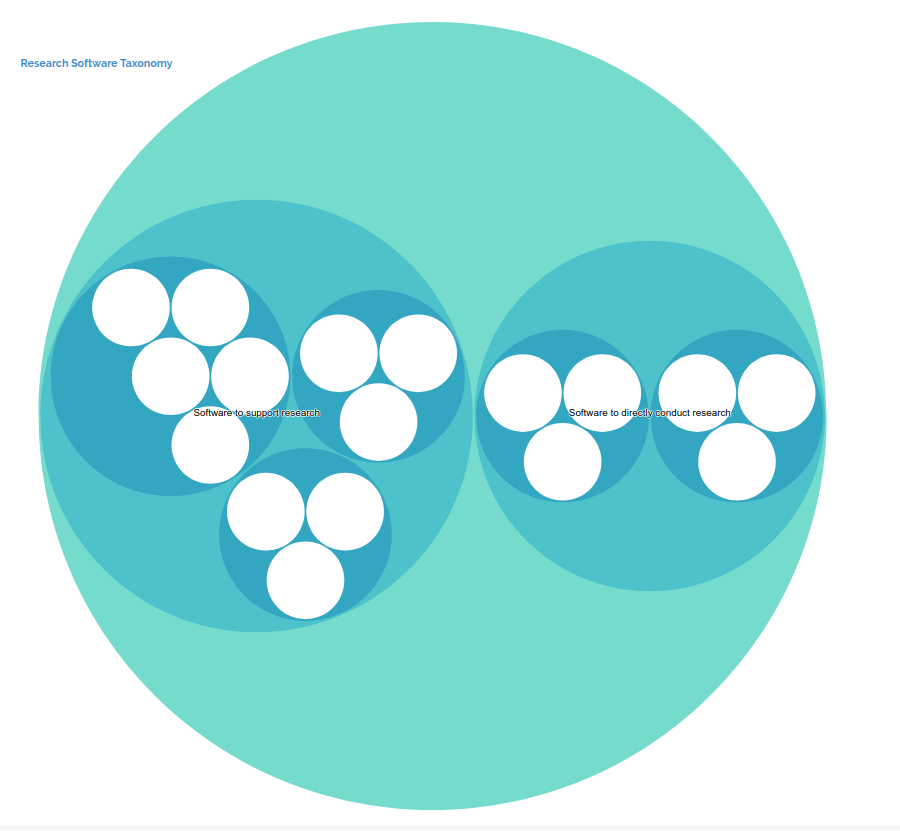criteria
 Would taking away the software be a detriment to research?
Would taking away the software be a detriment to research?
Oct 2, 2021
 Has the software been cited?
Has the software been cited?
Oct 2, 2021
 Is the software intended for a particular domain?
Is the software intended for a particular domain?
Oct 2, 2021
 Was the software created with intention to solve a research question?
Was the software created with intention to solve a research question?
Oct 2, 2021
 Is the software intended for research?
Is the software intended for research?
Oct 2, 2021
 Has the software been used by researchers?
Has the software been used by researchers?
Oct 2, 2021
taxonomy
 Domain-specific analysis software
Domain-specific analysis software
Examples: SPM, fsl, afni for neuroscience
 Application Programming Interfaces
Application Programming Interfaces
Examples: Pubmed, arXiv, Orcid, etc.
 Communication tools or platforms
Communication tools or platforms
Examples: email, slack, etc.
 Data collection
Data collection
Examples: web-based experiments or portals, command line clients or libraries
 Databases
Databases
Examples: container registry, software database, data text files, etc.
 Domain-specific hardware
Domain-specific hardware
Examples: software for physics to control lab equipment
 Frameworks
Frameworks
Examples: documentation generators, content management systems, django
 Formatting, indexing, or other small helper libraries
Formatting, indexing, or other small helper libraries
Examples: converters, string formatting, etc.
 Interactive development environments for research
Interactive development environments for research
Examples: Matlab, Jupyter, Rstudio
 Infrastructure
Infrastructure
Examples: orchestration tools, clusters, or server management
 Numerical libraries
Numerical libraries
Examples: includes optimization, statistics, simulation, e.g., numpy, scikit-learn
 Operating systems
Operating systems
Examples: linux
 Domain-specific optimized software
Domain-specific optimized software
Examples: neuroscience software optimized for GPU
 Package Management
Package Management
Examples: spack, apt, yum, npm
 Personal scheduling and task management
Personal scheduling and task management
Examples: Asana, Trello, etc.
 Provenance and metadata collection tools
Provenance and metadata collection tools
Examples: schema.org, codemeta, etc.
 Testing
Testing
Examples: testing software or libraries, CI for testing.
 Text editors and integrated development environments
Text editors and integrated development environments
Examples: atom, gedit, vim
 Version control
Version control
Examples: git, svn
 Virtualization technologies
Virtualization technologies
Examples: containers (singularity, docker, podman) and virtual machines
 Visualization
Visualization
Examples: interfaces to interact with, understand, and see data, plotting tools
 Workflow managers
Workflow managers
Examples: snakemake, cromwell, nextflow, slurm, etc.
